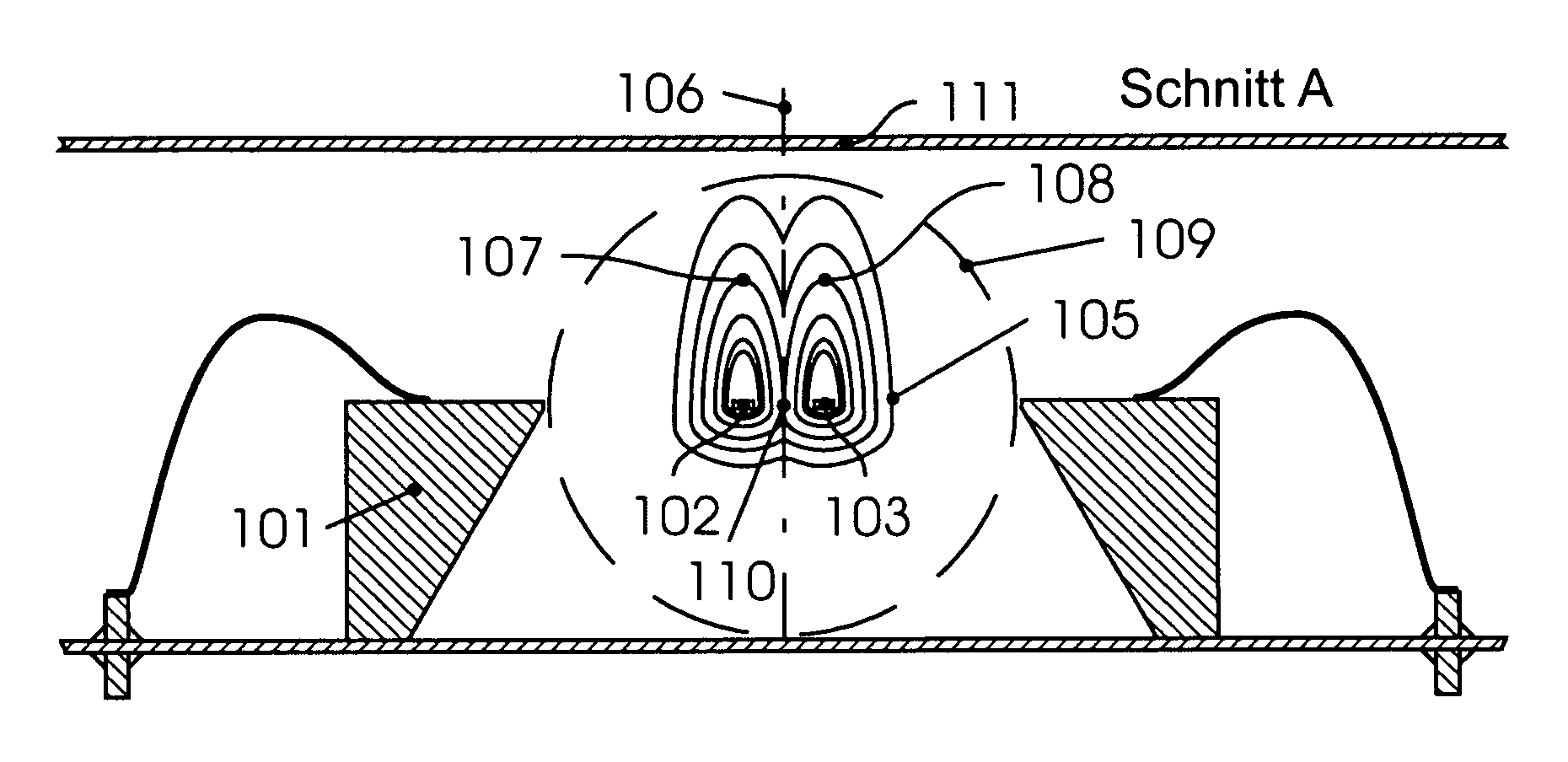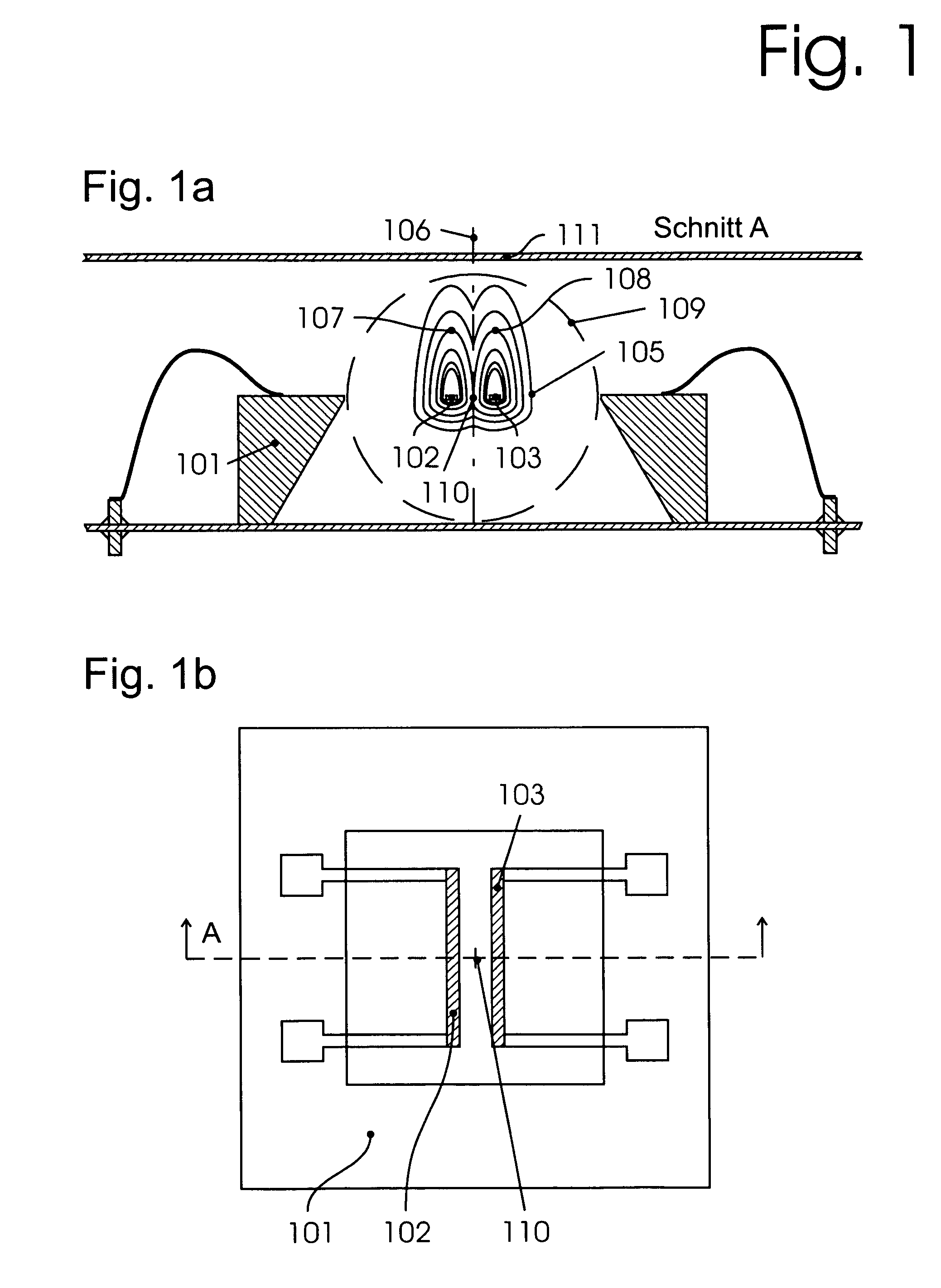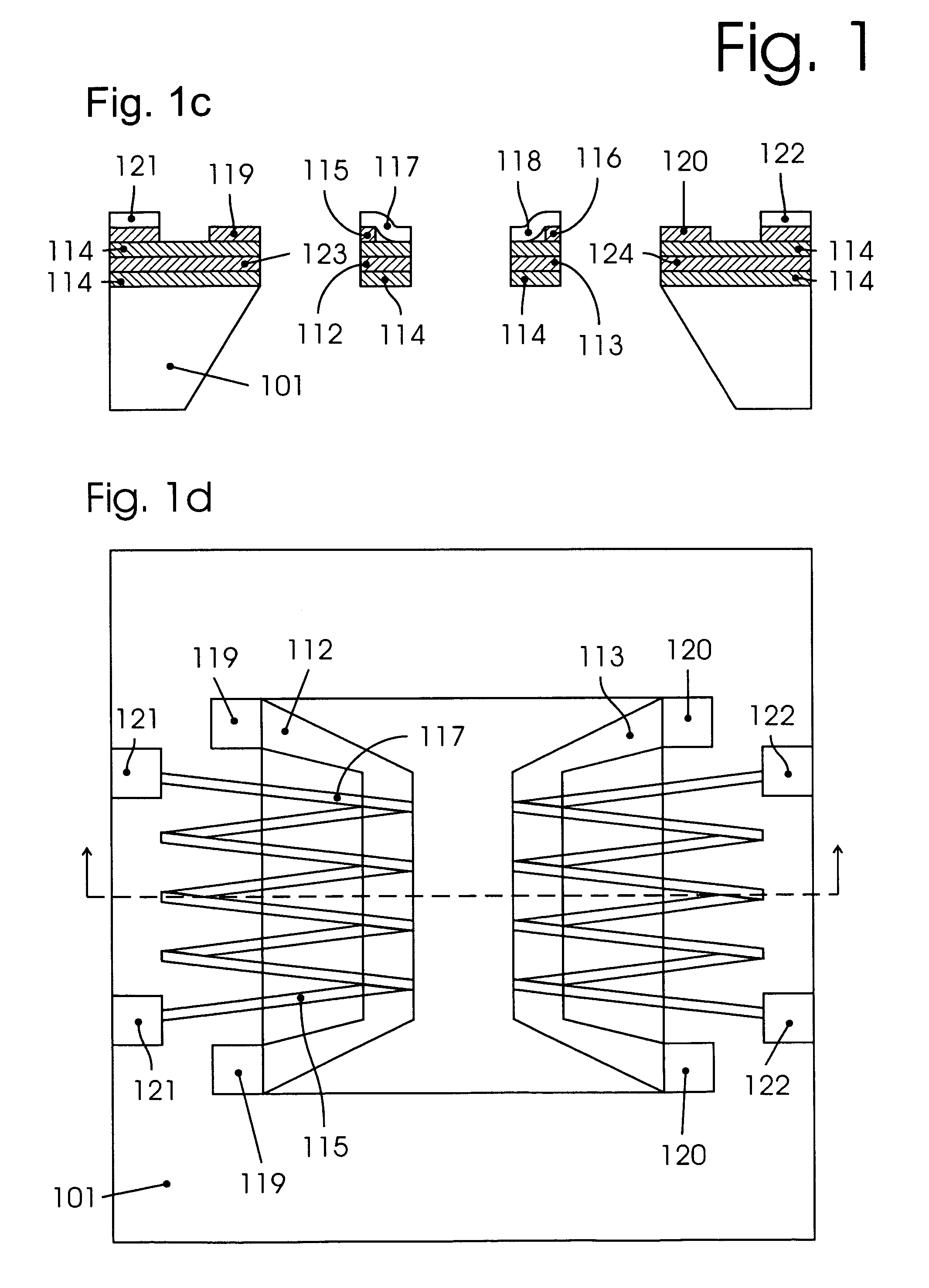Sensors for detecting position, inclination to perpendicular, movement and acceleration based on thermodynamic effects and method for operating and for manufacturing said sensors
a technology of thermodynamic effects and sensors, applied in the field of sensors, can solve the problems of limiting frequency relatively low, high response time of sensors, and thermal adaptation takes a certain time, so as to improve accuracy and long-term stability, reduce crosstalk to other measurement axes, and fast response of sensors
- Summary
- Abstract
- Description
- Claims
- Application Information
AI Technical Summary
Benefits of technology
Problems solved by technology
Method used
Image
Examples
Embodiment Construction
[0056]Exemplary embodiments of the invention are explained with reference to the drawings.
[0057]In the figures
[0058]FIG. 1a: shows a sensor according to the invention in section (A) comprising the sealed sensor housing 111 filled with fluid of suitable density and the parts fabricated by microsystems technology:
[0059]Supporting member 101, self-supporting sensor crosspieces (exciting and measuring elements: “sensor-elements”) 102 and 103 with temperature-dependent electrical resistance, for example, made of doped silicon. When these are heated, isothermal fields are formed around the sensor crosspieces. When the two crosspieces are located in a horizontal plane and heated with the same power, their isotherms contact the same temperature value 107 and 108 in the symmetry plane 106.
[0060]The diagram in FIG. 1a shows indicated isotherms (107, 108) such as are formed in the Earth's gravitational field. In weightless space the isotherms have the form of circles with the element (assumed ...
PUM
 Login to View More
Login to View More Abstract
Description
Claims
Application Information
 Login to View More
Login to View More - R&D
- Intellectual Property
- Life Sciences
- Materials
- Tech Scout
- Unparalleled Data Quality
- Higher Quality Content
- 60% Fewer Hallucinations
Browse by: Latest US Patents, China's latest patents, Technical Efficacy Thesaurus, Application Domain, Technology Topic, Popular Technical Reports.
© 2025 PatSnap. All rights reserved.Legal|Privacy policy|Modern Slavery Act Transparency Statement|Sitemap|About US| Contact US: help@patsnap.com



